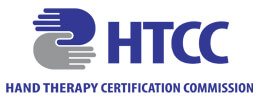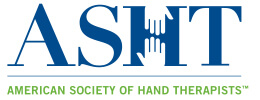POST SURGERY QUESTIONS
Can I drive home after my surgery?
No. You will need someone to drive you home after surgery due to the medications you are given before and during surgery.
When can I shower?
You may shower 2 days after surgery if you can cover your splint or dressing completely to avoid it from getting wet. Please avoid submerging your splint or dressing in water (such as in a bath tub or pool) for at least 2 weeks after surgery.
What is the best way to manage my pain after surgery?
Arora Hand Surgery uses a multi-modal approach to help manage your pain post surgery. First, we’ll prescribe non-narcotic medications like strong anti-inflammatories and Tylenol (acetaminophen) to manage your pain. Narcotics may be conservatively prescribed as well.
How long should I expect swelling after my surgery?
We want to assure you that swelling is common after surgery. Initial swelling after surgery can be expected to go down significantly in the first few weeks but may one of the final surgery symptoms to 100% resolve. To some degree, you may have light swelling for months after surgery.
Can I take other medications for pain after my surgery?
Although narcotics are conservatively prescribed after surgery for initial acute pain management, it may be recommended by Dr. Arora to replace them with anti-inflammatories like Aleve or ibuprofen. Tylenol (acetaminophen) can also be used together with anti-inflammatories (Aleve or ibuprofen), but should not be used at high doses with narcotics.
How long should I ice after my surgery?
Immediately after surgery, gently ice 4-5 times per day for 20 minutes at a time. Do this for 2 weeks. Icing will help manage your pain and keep inflammation down, so there is no limit to how many times per day you should do it. However, please be sure to limit your icing segments to only 20 minutes per session to prevent damaging your skin. Avoid icing if there is a chance you will fall asleep. If you have a splint or a larger amount of dressing on, you can place your ice over the top, just be sure not to get the splint or dressing wet.
After 2 weeks, you’ll find that you won’t need to ice as often except after the end of a particularly strenuous day or after physical therapy.
I’m getting constipation from my medication. Is this normal?
Unfortunately, yes. Rest assured that constipation is a common side effect of narcotic-based pain medications. To counteract it, increase your fiber intake by eating foods such as beans, leafy greens, and dried fruit such as prunes. You may also purchase over-the-counter stool softeners, such as Colace or Senokot. If you continue to experience unrelenting constipation, contact the Arora Hand Surgery offices so that we can help.
I’m feeling sick and nauseous from my medicine. Should I continue taking it?
Yes, but keep the following in mind. Nausea is also a common side effect of many narcotic-based pain medication and there are ways to help alleviate it. Eat prior to taking these medications and drink plenty of water. Do not combine Tylenol or Motrin with your medications. If you continue to experience unbearable nausea, please contact your Michigan hand specialists at Arora Hand Surgery and we will evaluate you and call in a prescription to your local pharmacy for anti-nausea medication.
How quickly do I start physical therapy?
Physical therapy usually begins 1-2 weeks after surgery. For most arthroscopic procedures, physical therapy will begin 1 week after surgery. A tailored physical therapy prescription will be provided at your first post-operative appointment and may vary per patient.
I’m worried I may get an infection. Are there any warning signs that I should look for?
Although post-operative infections are not very common and Dr. Arora will educate you beforehand on how to avoid them, we understand this may continue to be a worry for patients. Being aware of the signs and symptoms of an infection is always important. If you experience any of the below signs or symptoms, please contact Arora Hand Surgery to speak with Dr. Avery Arora:
- A sudden pain increase, seemingly out of nowhere
- A fever of over 100.5° or 38° C and/or body chills
- An expanding redness around your incisions that appears to be growing
- Incisions that appear to be opening and not staying closed
- A thick yellowy or white discharge from your incisions
I have a lot of bruising around my incision. Is this normal?
Yes. Bruising is common after surgery, and you may notice that the bruising extends a distance away from the incision itself. Some of the bruising may be tender to the touch while other bruising may not hold any pain at all. This is all normal.
When will my splint, soft cast, and/or bandages be removed?
Your splint/soft cast will be removed about 1 week after surgery during your first post-operative visitation. We will also provide you with more information about dressing removal during that visit.
When am I able to return to work?
Commonly for arthroscopic surgery we recommend recovering for 1 to 2 weeks, but depending on your job, your recovery period may be over 6 weeks. There are many variables to consider when determining how long you should wait before returning to work, such as what type of surgery you had, how labor intensive your work is, and the amount of time you must be on your feet at work.
When can I fly on an airplane?
You may fly an airplane at 1 to 2 weeks after your surgery.
When can I drive?
In general, you may not drive while taking pain medication.














